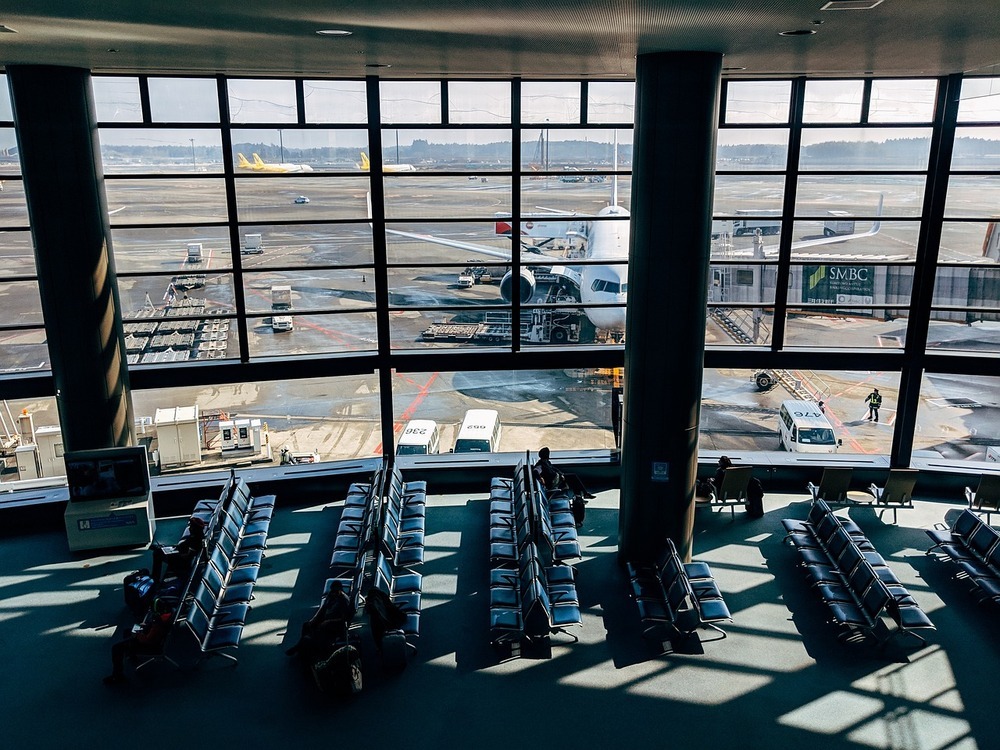Ever wondered, “What is a layover?” Well, in simple terms, a layover occurs when, flying to a destination, you have to stop at an intermediary location en route to your final destination. Let us explain it in detail: Your flight would originate at one airport and then stop at another airport, known as the stopover location. Here, you stop—anywhere from briefly to for a long time—and then board another plane to take you to your final destination. Whether long or short, layovers are a feature of modern air travel that can offer a fascinating glimpse into another city or at least a brief respite during your journey.
What Is a Layover Flight?

More precisely, when one tries to define what a layover flight is, we are referring to that moment in your journey-whether on international flights or others—when you switch planes en route to your final destination. Whether the time between your flights is only a few minutes or several hours, as long as it’s not over a day, it can be considered a layover. The essence of a layover flight remains the same, though the time spent on the ground varies significantly between domestic and international layovers.
Many choose to call a short stay during travel a connecting flight. For all practical purposes, this is the same as a layover from the perspective of the travelling public. It may be true that airline staff distinguish layovers from stopovers-which imply an overnight period of rest and relaxation—but these distinctions rarely concern the passenger’s perspective. In the average flyer’s mind, the difference between a layover and a connecting journey is simply how much time you spend moving from A to B. In any case, there is much to keep track of and consider.
How Does a Layover Work?
Are you interested in understanding how layovers work? A layover refers to any intermediate stop you make en route to your final destination. Typically, this involves changing planes during a journey that isn’t direct. But what exactly happens during this short break in your trip? The process entails disembarking from your initial flight and navigating your way to a new gate or terminal to board a connecting flight. While layovers might seem straightforward, they can sometimes complicate your travel plans, particularly if your first flight is delayed.
Such delays may even cause you to miss your connection, leading to unexpected inconveniences and expenses. In these situations, understanding your rights and how to claim compensation for missed connections can be crucial. Despite these potential challenges, many travelers choose layover flights because they are often cheaper than non-stop options. This presents a trade-off between cost and time: you might save money, but you’ll likely spend more time traveling and may face additional challenges. If you’re aiming to reduce travel expenses, it’s crucial to understand what a layover entails and how to manage it effectively.
TIP: Always check your connecting flight’s terminal and gate number upon arrival, as airports can be confusing, especially when transferring between terminals.
How Long Are Layovers?

Are you curious about how much layover time you should plan for? Layovers can vary significantly in duration, ranging from as little as 30 minutes for a quick transfer to several days if you decide to extend your stop. Contrary to popular belief, most layovers typically last between two and eight hours. When booking a flight, the duration of your layover is usually clearly stated in your itinerary, often presented as specific time intervals between connecting flights, such as ‘three segments of 43 minutes each.’ This information plays a key role in shaping your travel plans, influencing whether you’ll have time to rest at the airport, explore the city, or simply make your connection without hassle. Knowing what to do during a layover can help you make the most of your time, whether you stay at the airport or venture out. Understanding how long a layover should be is essential for selecting flights that align with your travel preferences and any potential limitations you might face.
Can Layovers Be Multiple Days?
Though airlines usually plan their routes to have layovers of less than 24 hours, the smart traveler may ask, can layovers be several days? Technically, if the layover exceeds 24 hours, it’s not offered as a valid connection by most airlines. But there is a wonderful loophole for those who want to turn a humble layover into an adventure. You could try to extend your layover through multi-city booking options on various travel platforms, giving yourself a day or two to explore new sights and soak in the vibe of another city. This can be especially useful when dealing with a long flight, allowing you to break up the journey and make the travel experience more enjoyable. It’s a clever strategy for those who want to make the most of their journeys, merging practicality from stopover flights with the thrill of spontaneous exploration.
TIP: Use multi-city search on travel booking platforms (e.g., Google Flights or Skyscanner) to extend your layover into a mini trip. For example, a layover in Singapore can turn into a 2-day exploration of the city.
How Does Luggage Work on a Layover?
Understanding how layovers work is not only about how to get from one plane to the next, but also about how to manage your luggage. While checking in, your baggage gets tagged not only with your origin and destination but also with the codes of stopover airports. This careful tagging at check-in ensures that upon arrival, your luggage is either transferred directly to your connecting international or domestic flight or put in storage to await your continuation. Should the layover be the end of your journey, you will meet your luggage on the conveyor belt, ready to step into your destination. This is the smooth process behind the concept of a layover, which should eliminate any baggage questions during layovers and free the traveler to contemplate their journey or enjoy an unplanned adventure on longer stops.
What Is a Stopover?
Now, turning to the details of flying, one may wonder: what is a stopover? A stopover is essentially an extended layover—a longer break in your journey. For domestic flights, this typically means any break longer than four hours, while for international routes, the threshold extends to 24 hours or more, highlighting a significant difference between stopovers and layovers. During stopovers, passengers often escape the confines of the airport, collect their luggage, and sometimes spend a night in a hotel, enjoying a brief exploration of a new city.
Savvy business travellers, on the other hand, often arrange stopovers to maximise the value of their journey, spending time exploring another destination free from the usual hustle and bustle. Recognising the appeal of such adventures, some airlines have introduced stopover programmes that allow passengers to enjoy an extended break without additional cost. The trend of offering free stopovers has waned in recent years, particularly when booking with bonus miles, though exceptions do exist. It is a world waiting to be explored, and stopover flights provide an excellent way to enrich your travel experience. Always check with your airline for the latest offerings to make your journey as enriching as it is efficient.
What Is the Difference Between a Layover and a Stopover?
In air travel, the terms layover and stopover have different implications. A layover is short, usually only a few hours, where passengers normallystay in the airport, awaiting a connecting flight. This is what is referred to as the meaning of a layover flight. A stopover, in contrast, is over 24 hours and involves leaving the airport to see new areas and enjoy local cultures. This longer break will add depth to your journey and can even turn transit into exploration. Knowing these differences is essential to plan your travel effectively, as it determines whether you can make a quick pause or have a deeper adventure.
Layovers vs. Stopovers
| Criteria | Layover | Stopover |
| Duration | Under 24 hours (international), under 4 hours (domestic) | Over 24 hours (international), over 4 hours (domestic) |
| Purpose | Short connection between flights | Extended pause to explore the layover city |
| Airport Stay | Typically stay inside the airport | Usually leave the airport for sightseeing |
| Baggage Handling | Automatically transferred to next flight | May require baggage collection |
| Example | 2-hour layover in Dubai | 2-day stopover in Singapore |
FAQ
Yes, you usually can leave the airport during a layover, especially whenyou have much time between your flights. That is the perfect time to goand see the surrounding area, eat a meal outside the airport, or maybe even take a quick tour of the city where you will be on layover. However, do this wisely—make sure you have adequate time to getback to the airport, check in your luggage if you have any, and gothrough security checks. Also, check if you require a transit visa or any other travel documentation to exit the airport premises, depending on your nationality and the country you are in.
Most of the time, you will be required to alight from the plane if it’s a layover. That way, the airline gets enough time to clean the plane and re-stock and undertake any other maintenance work required. Anexception is during those long flights that are considered refueling stops, but the passengers are not required to change aircraft. Even in these cases, you could be asked to leave the aircraft temporarily as the refueling takes place for safety concerns and so that the proper procedures are followed.
Typically, no. When you check in for your journey at your departure airport, you’re usually given boarding passes for all connecting flights that form part of your itinerary. This is a streamlined process to make traveling easier and smoother for passengers, who then have to do very little when going through airports during layovers. However, always check with your airline to confirm their specific procedures, as practices can vary slightly depending on the airline and the airport.
